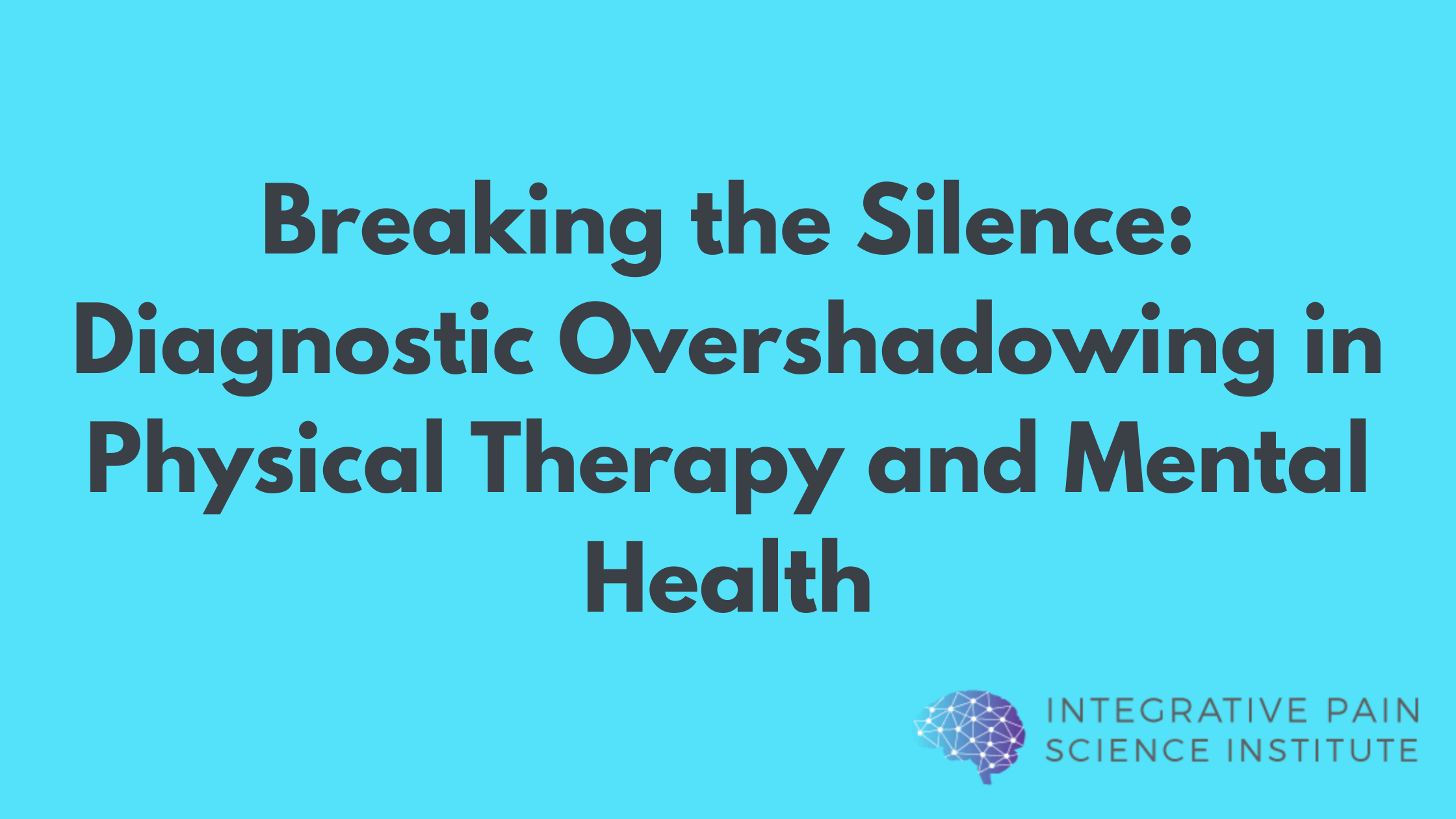Two of your patients today are strikingly similar.
They are both men in their 50’s, overweight, hypertensive, and coming to see you with a diagnosis of chronic lower back pain. One of them is rather introverted, smokes cigarettes, loves to read, eats relatively well, and is not fond of exercise. The other is outgoing, likes action movies, enjoys hiking, and loves fast food. Although you may prescribe similar exercises for both men, there is a clear need to address different strategies to prevent disease, future pain, and to improve their overall health. How prepared are you to counsel patients on lifestyle-related behavior change? Counseling is an art, science and all around valuable skill that can prevent and treat chronic disease.
How prepared are you to counsel patients on lifestyle-related behavior change? Share on XSign of the Times: Lifestyle Conditions
Poor nutrition and physical inactivity are the main triggers of chronic conditions such as cardiovascular disease, diabetes, chronic respiratory disease, smoking-related conditions, chronic pain syndromes, and cancer, all of which are among the leading preventable causes of premature death and disability worldwide (1).

These aptly dubbed “lifestyle” conditions cost patients and our health system an enormous amount of money, both in lost productivity and in pharmacological treatments treating symptoms, rather than cause. As simple as it seems, eating a healthy, balanced diet and staying physically active are oftentimes all that is needed to prevent, manage, and even reverse chronic disease. Unfortunately, efforts to curb lifestyle-related conditions by promoting physical activity and healthy nutrition have yielded modest results(2).
Physical Therapy and Lifestyle Change: Unique Role, Outstanding Opportunity
Physical therapists are in the unique position to reduce the burden of chronic disease by counseling their patients or clients about risk factors and the respective behaviors that promote or aggravate them:
- Physical therapy is the third largest healthcare profession, and one of the safest treatment options for patients, as it primarily employs non-drug and non-invasive interventions, as well as patient counseling. This also makes physical therapy one of the most cost-effective options within healthcare systems worldwide.
- Compared to primary care providers, physical therapists see their patients more frequently and with protracted contact time, allowing the two parties to build rapport and trust through a more personal relationship. This facilitates patient adherence to interventions and provides flexibility to modify treatment as needed during follow-up visits.
- It is common for patients attending physical therapy to have two or more lifestyle-related conditions, regardless of the primary complaint, or reason for referral. This makes counseling on health-promoting lifestyle behaviors all the more relevant in its risk-reduction potential and overall health improvement, compared with disease-focused interventions.
- Physical therapists have strong expertise in prescribing physical activity, essential to regaining mobility and physical function.
As we see, the arguments are strong, but what is the evidence that when behavior change is applied it actually pays off?
Physical Therapy is the third largest healthcare profession, and one of the safest treatment options as it primarily employs non-drug and non-invasive interventions, as well as patient counseling. Share on XCan PTs Effectively Counsel Patients with Lifestyle-related Conditions?
This question is addressed in a systematic review conducted by researchers in the Netherlands and Canada, analyzing literature published from 1950 to 2010 (3). Stringent selection criteria narrowed down the results to 7 investigations that assessed three important areas:
#1 Risk Factors in Target Populations
Four studies provided primary prevention to patients with identified risk factors. In the first, inactivity proved a moderate-to-high risk factor for cardiovascular disease and obesity. Two other investigations were conducted that also provided primary prevention of these conditions; one aimed at increasing physical activity for general health, the other intended to evaluate physical therapists’ counseling behaviors without specific intervention. In the last study, diabetic patients were targeted for secondary prevention. Physical therapists were the sole providers in three of the studies and were part of inter-professional teams in the other.

#2 Primary Interventions and Counseling Strategies
Across all studies, the primary interventions were physical activity and nutrition counseling, ranging from a single counseling session to 47 sessions, over a period of 6 months. Patients were counseled (mostly face-to-face, either individually or in groups) about the influence of lifestyle behavior on health, goal setting, strategy development, support and encouragement, identifying barriers, and feedback. The stages of change (SOC) model was used in three studies, and the 5 A approach was used in two. In addition, self-monitoring (i.e., diarizing physical activity and food records) was used in four studies.
#3 Positive Outcomes Achieved by PTs
Positive outcomes included increased duration of overall weekly physical activity (compared to a control group), exercise capacity, muscle strength; decreases in obesity-related parameters (BMI, waist circumference) and cardiovascular risk (blood pressure); increased patient-perceived effects of adverse lifestyle behaviors, and decreased anxiety traits.

The conclusion reached in the study outlined above is that physical therapists can effectively counsel on lifestyle behavior change. That said, health benefits were assessed within a relatively short time (a few months) in the majority of the studies, thus it is unclear whether these improvements were sustained long-term (3).
Learn more about today’s topic here: THE SCIENCE OF BEHAVIOR CHANGE WITH DR. JANET BEZNER, PT, PhD
What Education Strategies Are Likely to Promote Behavior Change?
Although the counseling methodologies among the seven studies varied widely, the overall results suggest that interventional approaches actively involving the patient, such as discussions, role-playing, and quizzes, combined with self-monitoring through log books or diaries, are more effective than information-only strategies, such as brochures or audiovisual materials (3).
A second study, directed also by Dr. E. Dean, provides a valuable contribution to this issue by critically reviewing health education strategies used by physical therapists to promote behavior change in people with lifestyle-related conditions (4).
You can hear Dr. Dean talk about A Physical Therapist’s Role in Lifestyle Medicine in this podcast.
Wide variation was noted in the methods applied to educate patients on lifestyle behavior changes, including: (5)
- Theory: Most health behavior change interventions are rooted in two main theoretical frameworks; the SOC model and the 5A’s approach.
- Timing: Defines the timeline for interventions, typically pre-assessment, post-assessment, and follow-up.
- Session structure: Brief advice, one-on-one, group, telephone.
- Technique: Defines the ways in which patients will make behavior change happen, e.g. motivational prompts, personalized programs, goal-setting.
- Delivery medium: How the information is passed on to patients, e.g. brochures, diaries, audiovisuals, skills demonstration.
The authors also bring attention to some valuable strategies that were underused or not applied: (4)
- Motivational interviewing (MI). Defined as “a collaborative, person-centered form of guiding to elicit and strengthen motivation for change”, MI uses empathy and non-judgmental curiosity to ingrain “motivation towards change from within the patient, rather than from learning new skills” (6, 7). MI has been shown effective in the treatment of substance abuse and other health problems and is used as part of the Motivational Model of Patient Self-Management to treat chronic pain (8).
- Evaluating a patient’s literacy and learning style. These are fundamental considerations to decide on the teaching mode and incentive strategies that would be most effective for behavior change.
Dr. Tatta’s simple and effective pain assessment tools. Quickly and easily assess pain so you can develop actionable solutions in less time.
Changing Minds to Change Lifestyles: A Physical Therapist Challenge
So back to your two patients…
While a behavioral theory that can change patients’ sports preference has yet to be invented, when it comes to health counseling, tailoring your advice to your patients’ lifestyles will be more likely to produce positive, long-lasting results. For instance, reviewing smoking cessation programs and setting up a daily, 20-min brisk walking routine while listening to music or an audiobook may be a good option for the circumspect client. In contrast, setting up a healthy eating plan and taking cooking lessons may be of benefit to the other.
Replacing “sick care” (providing services to patients only after they have developed a disease and functional decline) with “health care” (providing disease prevention as part of routine clinical care) is the only way forward.
Counseling on lifestyle and behavioral changes is crucial in pain care and for practitioners who are treating chronic disease. This is the way out of the pandemic of chronic disease and chronic pain.
I hope this discussion serves as a useful resource to improve your counseling skills!
Share your experience below and visit us on Facebook!
REFERENCES:
1 – World Health Organization – Chronic diseases (2018) www.who.int/topics/chronic_diseases/en/ retrieved October 2018
2- Dean, E. (2009). Physical therapy in the 21st century (Part II): Evidence-based practice within the context of evidence-informed practice. Physiotherapy Theory and Practice, 25(5-6), 354-368.
3- Frerichs, W., Kaltenbacher, E., van de Leur, J. P., & Dean, E. (2012). Can physical therapists counsel patients with lifestyle-related health conditions effectively? A systematic review and implications. Physiotherapy theory and practice, 28(8), 571-587.
4- Alexander, J., Bambury, E., Mendoza, A., Reynolds, J., Veronneau, R., & Dean, E. (2012). Health education strategies used by physical therapists to promote behaviour change in people with lifestyle-related conditions: a systematic review. Hong Kong Physiotherapy Journal, 30(2), 57-75.
5- Mason, P., Rollnick, ., & Butler, C. Health Behavior Change – 2nd Edition – ISBN: 9780702031533, 9780702043215. Elsevier Health Sciences, St. Louis, MO (2010)
6- Martins, R. K., & McNeil, D. W. (2009). Review of motivational interviewing in promoting health behaviors. Clinical psychology review, 29(4), 283-293.
7- Harman, K., MacRae, M., Vallis, M., & Bassett, R. (2014). Working with people to make changes: a behavioural change approach used in chronic low back pain rehabilitation. Physiotherapy Canada, 66(1), 82-90.
8- Jensen, M. P., Nielson, W. R., & Kerns, R. D. (2003). Toward the development of a motivational model of pain self-management. The Journal of Pain, 4(9), 477-492.



